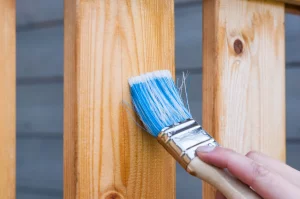Many Painters Brisbane use a hat to create portraits. A beret is an example of a painters hat. This traditional French style of hat is a favorite among many artists. The beret is one of the oldest types of brimmed aline slouch floppy, slouchy headgear. It is associated with painting for a long time.
A painters’ hat is an important part in the artist’s look. The style of the hat is as individual as its wearer. It can also be a fashion statement. A late 1800s art critic coined the term “fauve”. Fauve canvases were brightly colored in the Grand Palais. The fauve painters’ slouchy hats became synonymous with modern art.
Another painters hat name is ‘Arnolfini’. In 1434, Jan Van Eyck painted The Arnolfini Portrait. The typical summer hat of the merchant class was the heavy-looking headpiece that you see on Arnolfini. A straw hat dyed in black was common. The hat was worn by the merchant for business and religious purposes. His hat symbolizes his conservatism as well as business sense.
Jan Van Eyck’s Arnolfini portrait was a classic example for a summer hat worn mostly by merchants. A straw cloche was traditionally black and plaited. The merchant wore this hat while he was in the city. His conservative politics, business acumen, and business acumen earned him a nickname: ‘Arnolfini. He was the first artist who painted a portrait in this style.
The arnolfini was first worn by merchants during the summer months. This hat was made of plaited, black-dyed straw and was common among merchants. The pious merchant was known his conservative politics, and his business savvy. An example of a painters’ hut name is the Arnolfini Hat. The fauve Hat was a French-made fauve hat.
Jan Van Eyck created the Arnolfini-Portrait in 1434. The painters hat on the sitter is a traditional summer hat worn by the merchant class. It was made of black plaited strait and was often blacked. The pious Arnolfini was renowned for his conservative politics, business savvy, and piety. The fauve hat was one of the first examples of a fauve ‘hat’.
The arnolfini cap is a well-known fauve hat. It was worn in the summer by merchants. It was made of plaited strait and dyed in black. The fauve was a fashionable summer frock that was also worn by merchants. During Renaissance times, it was common to wear a fauve headdress when attending an exhibition of art.
Another example is the arnolfini hat. Painters wore their own style hats in the 14th century. They were often named after the wearer. A fauve-colored hat is very popular. It was fashionable in the Renaissance period. This fauve period was dominated in part by the art nouveau movement. The painters’ fauves reflected an artistically influenced style.
The name of a fauve hat was first used in the early 1500s by painters. The term “fauve” was coined by a French art critic who wanted to distinguish painters’ hats from the “fauve” canvases in the Grand Palais. The fauve was a stylistic break from Matisse’s earlier works. The style was characterised by scribbles, and non-naturalistic colours.
A beret is a soft, round, flat-crowned cap. It is typically made from woven wool, crocheted or acrylic fibre. Berets were first made in the 19th century and are still associated with France. A Renaissance master was associated once with a beret that had a black sunbonnet. The beret is still associated the Renaissance masters, although some of their works may have been influenced.

